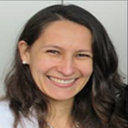[Adult cerebellar medulloblastoma: imaging findings in eight cases].
Słowa kluczowe
Abstrakcyjny
Medulloblastoma is a brain tumor of neuroepithelial origin, frequent in children but rare in adults. The imaging pattern is well studied in the pediatric group thought there is controversy about the imaging characteristics in adults. We report CT and MRI imaging findings of 8 adult patients with cerebellar medulloblastoma. The mean age was 29.6 years (16-65 years). The male: female rate was 5:3. Most were lateral, located in the cerebellar hemisphere (63%). They were hyperdense on CT (67%). On the MRI they were all hypointense on T1, hyperintense on T2, with gadolinium enhancement of variable pattern. In 7 cases there were cysts/intratumoral necrosis. It was seen calcifications in 2 cases. Four patients presented hydrocephalus. In 2 cases there was no perilesional edema. All had well defined margins and superficial extension. Dural involvement was seen in 7, one of which with lateral venous sinus compromise, and brainstem invasion was seen in 1 case. The imaging findings of medulloblastomas in adults are unspecific and different from those in child. They should be considered in the differential diagnosis of cerebellar tumor in adults, especially if they are hyperdense on CT, with well defined margins, with superficial extension and with dural involvement.


